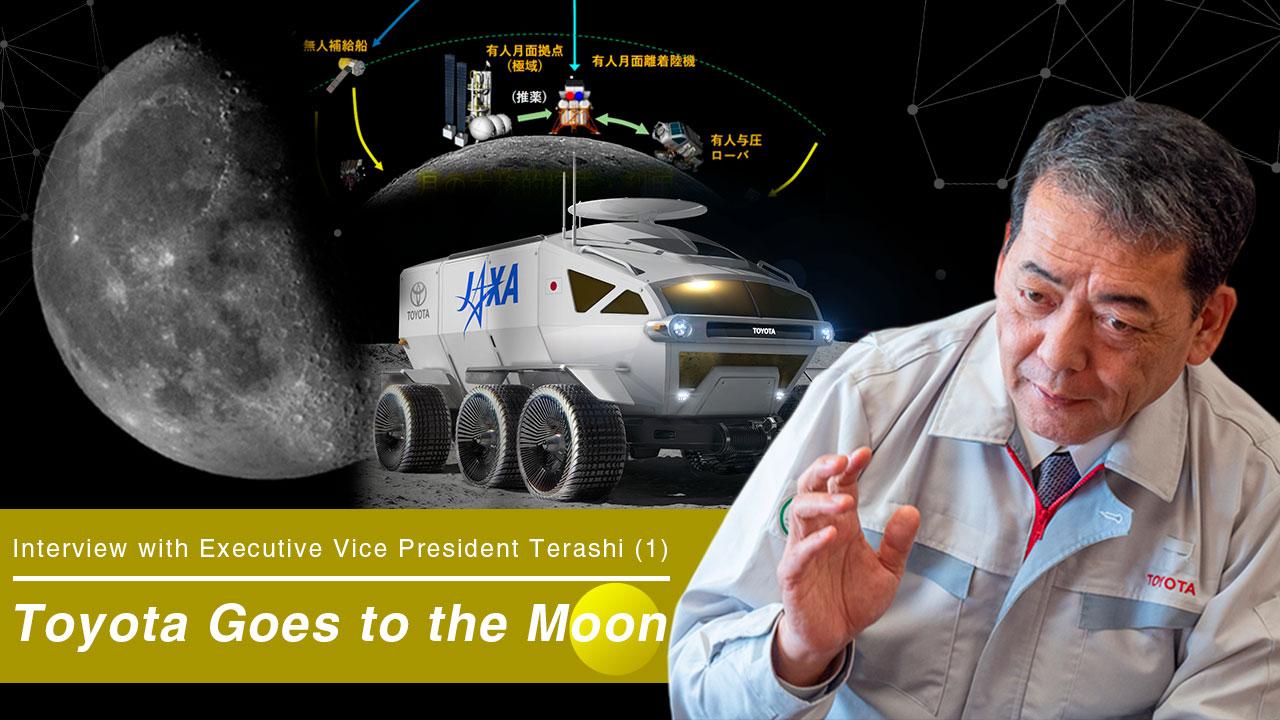
Toyota goes to the moon: Toyota's thoughts on "Driving on the Moon" -
Interview between Naoto Ikeda (Motor Journalist) and Toyota's Shigeki Terashi (Part One)

Toyota will embark on a project exploring the moon. Borrowing from the words of President Akio Toyoda, Executive Vice President Shigeki Terashi has stated that the challenge is to combine “the virtual with reality” and bring the technology on earth to the moon. In this, the five-part series, Motor journalist Naoto Ikeda and Executive Vice President Shigeki Terashi discuss how Toyota is often criticized for being lead-footed when it comes to battery electric vehicles (BEVs), and how the top management of Toyota’s Technical Center thinks about and plans its future strategy to meet the global trend of vehicle electrification. Here is the first of the five-part series.
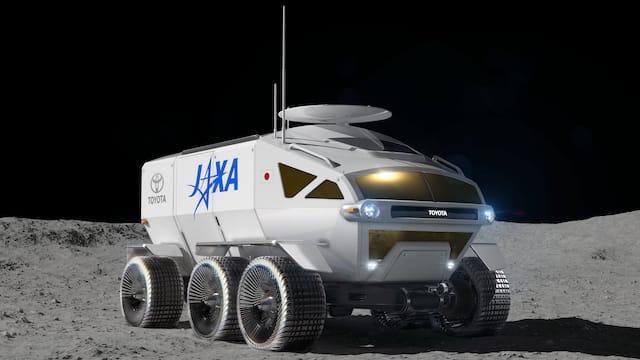
On March 12th the Japan Aerospace Exploration Agency (JAXA) and Toyota Motor Corporation announced that they have started consideration of how they can collaborate on upcoming international space exploration missions. In the next ten years, it is very likely that Japanese astronauts will be landing on the moon. In turn, the Japanese flag will be planted on the moon, and the first Toyota licensed pressurized lunar rover will be traveling more than 10,000 kilometers on the moon, exploring five different locations on the celestial body.
This space exploration mission is an international collaborative project between industry and academia with the goal of expanding human activities and contributing to the creation of new intellectual assets.
Access to the moon is divided into three stages: “Earth-Gateway,” a manned base near the moon, “Gateway-Lunar Surface,” and “Rover,” which will serve as a base and lunar-surface cruising vehicle. The rover will move among research bases driven by unmanned artificial intelligence (AI), and the astronauts will move as needed from the Gateway to the rover via lunar surface takeoff and landing aircraft for research, experiments, and vehicle maintenance.
We conducted a lengthy interview with Shigeki Terashi, Toyota Executive Vice President and Chief Technology Officer (titles as of Mar. 2019), about this international space exploration mission.
Drive with AI while creating automatically generated maps in real time
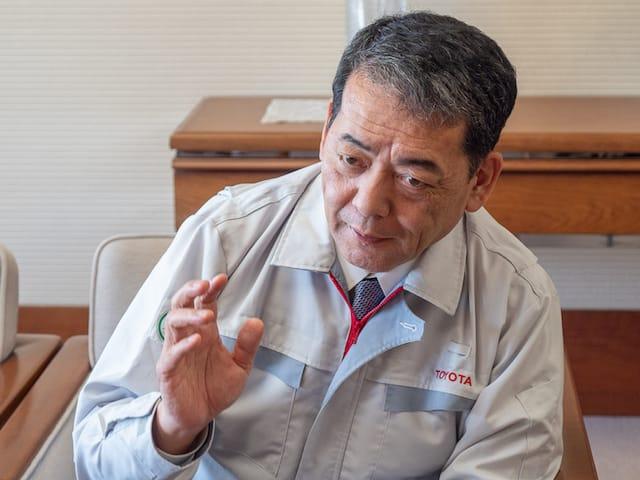
- Terashi
-
We received this offer originally because of our vehicles like the Land Cruiser and Hilux, which have earned a reputation for being able to bring riders back home from wherever they went, even under the harshest conditions found in various parts of the world. In other words, the durability, reliability, and driving performance of Toyota's cars were evaluated. In addition, an assessment of CASE potential (CASE = Connected, Autonomous Driving, Shared/Service, and Electrification, which are technologies necessary for future vehicles) is required for moon missions. I don’t think there will be any “sharing” [on the moon] but the most important thing is the technology for using power sources for manned and autonomous driving. In the case of the moon, the only option is to drive automatically while judging the road surface using AI. Since it is not possible to have some map maker create a map, we will have to drive with AI while creating automatically generated maps in real time.
- Ikeda
-
Will this be done by sending data somewhere or will there be a computer onboard the vehicle?
- Terashi
-
We will likely send part of it, but even after sending the data to earth and hearing back with instructions, it won’t be soon enough since there is a time difference. Therefore, I think we basically need to accomplish this with our own autonomous driving judgment on site.
- Ikeda
-
So, the capabilities of CASE are being questioned?
- Terashi
-
That’s right. Electrification, connected technologies, and AI-based autonomous driving are important, so there is a need for a high degree of integration between “real mobility,” that is the reliability provided by conventional automotive technology until now, and the new CASE technologies, which will become more important in the future. If I may borrow the words of President Toyoda, it is about the combination of “the virtual with reality.” I think that in this case, it means realizing the vehicle technology we have here on earth up on the moon.
Astronauts and supplies launched from earth by manned and unmanned rockets will be dropped on the moon via the Gateway. The aviator will land near the rover when needed, so long-distance travel will need to be driven automatically by the rover using AI (Source: JAXA) - Ikeda
-
When will this plan be completed?
- Terashi
-
It will be done by 2029. We’d like to be able to set foot on the lunar surface in ten years. Since we cannot go there and do a dry run in advance, we must determine the basic specifications of the rover at a fairly early stage and consider how to realize it. To do this, we need to examine and anticipate what the environmental conditions are like, which requires the cooperation of not only JAXA and Toyota, but also others. Even though Toyota has basic knowledge of cars, I think we need help from all over Japan. Whether it is with large companies or small companies, we will all need to cooperate to identify the technologies we will need to incorporate.
- Ikeda
-
Have you already decided which companies will be cooperating?
- Terashi
-
Not yet. Everything has just started, and we are about to find out what kinds of technologies will be necessary. Although JAXA has most likely been using various technologies for space travel, this will be their first experience with driving on the moon. Therefore, we have to share knowledge about what may happen with various experts. For example, I’m assuming that it will not be possible to use rubber tires.
- Ikeda
-
I have researched and found out that Apollo 15, 16, and 17 have been the only manned missions to the moon thus far. Thus, 47 years have passed since the last one. More recently, China put “Yutu” on the moon in 2013, but this was unmanned. In the sense of being manned, Japan will be second only to the United States. Even in terms of unmanned missions, Japan would follow only the United States, the former Soviet Union, and China, and that is surely something to be proud of. Furthermore, astronauts being able to take off their space suits inside of the pressurized lunar rover would be a first.
- Terashi
-
Yes, that’s right. Exciting, isn’t it?
- Ikeda
-
And you will be using fuel cells [to power it], correct?
- Terashi
-
Actually, hydrogen fuel cells have been used since the Apollo Program. Not only the rover but also various things requiring power can use electricity from hydrogen. Therefore, hydrogen will be used as an energy source because technologies that have been traditionally developed in this genre must be matured further along with new technologies, such as CASE. Our goal is to create a hydrogen society on the moon.
- Ikeda
-
In that case, would you agree that JAXA chose Toyota because of its reliability and track record, including the Land Cruiser, and because Toyota decided to cooperate with JAXA because of its core hydrogen fuel cell technology?
The lunar challenge is far beyond Toyota’s Five Continents Drive Project
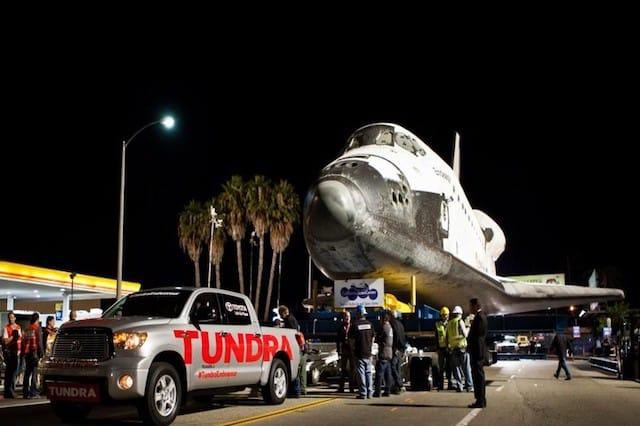
- Terashi
-
There is another thing we have been doing. Toyota has been supervising the Five Continents Drive Project since 2014. We started from Australia, and this year we will reach Asia, the last stage. Finally, we will reach Japan at the end of 2020. We are doing this because we wanted to go back to the fundamentals of “roads train people, and people make cars.” No matter how rough the road, we always return safely. To do this, what kind of technology do we need? Conventional car technology is important, but we must also incorporate new CASE technologies. It is perhaps impossible to achieve this goal of highly advanced technology as an extension of conventional automobile manufacturing under severe conditions. That's why we challenge ourselves to develop technologies to overcome obstacles in really tough places. That technology is reflected in our standard cars. In fact, we can never be sure how much can be reflected until we actually try, but the lunar challenge is far beyond the vector of Toyota’s Five Continents Drive Project. I think there are big differences between the Five Continents Drive Project and the moon. That’s why we wanted to challenge ourselves to scale the heights of such technologies, with the hope that we will be able to reflect these technologies in our customers’ cars.
- Ikeda
-
So, in as far as where Toyota is headed, would you say the challenges presented by the moon are a very attractive direction for study?
- Terashi
-
I think so, yes.
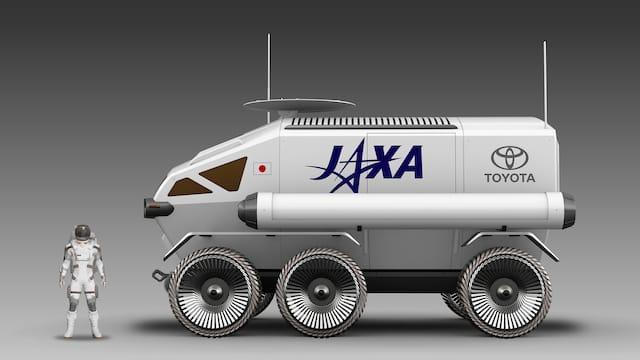
- Ikeda
-
I assume you will be examining what functions will be required before deciding on various specifications, but is there anything that you know now about what functions will be needed for this lunar rover?
- Terashi
-
The vehicle is about the size of two microbuses. Depending on the mission, it will have to run and tour the whole time on the moon and then come back, so instead of something cramped like a camper van, the car needs to have a space big enough to live in, approximately the size of 4.5 tatami mats.
- Ikeda
-
I see. I guess it’s possible to secure enough living space within about 4.5 tatami mats. Will the rest be filled with equipment?
- Terashi
-
That’s right. Once it is filled with hydrogen, we want it to be able to run about 1,000 km. There is no oxygen on the moon, and we have to bring hydrogen, so we will be bringing tanks of oxygen and hydrogen, but it will probably be difficult for people in spacesuits to change tanks frequently on the moon. We will of course be bringing spare tanks, but I think that if we can go for about 1,000 km, we won’t have to deal with taking much time for such work.
- Ikeda
-
According to the illustration, I see that there are solar panels. Are these meant to be used all the time or, for example, is it like an auxiliary power supply to be used while being parked?
- Terashi
-
We say electric vehicle, but we don’t think of BEVs (battery electric vehicles) and FCEVs (fuel cell electric vehicles) as different things. If we define an electrified vehicle as having three components — a motor, a battery, and a power control unit (PCU) — then both FCEVs and BEVs have these same three. But BEVs are loaded with a lot of batteries to store energy in advance, while FCEVs generate electricity using hydrogen and oxygen and can store excess electricity in batteries. They are exactly the same except for whether they get their power from an outlet or generate it on their own. For example, if the performance of an all-solid-state battery improves, which is currently under development, you can have a compact battery and also generate electricity with a fuel cell, which will make it possible to switch between whichever is more efficient at different times. The day and night cycle of the moon is 14 days, so it will be possible to live by charging solar panels in the daytime. I think that it can work with the combination of living on hydrogen for the long nights when solar power cannot be used.
- Ikeda
-
What you are saying means that you will be carrying only very limited sized batteries?
- Terashi
-
I think that ultimately, how we use it will depend on the performance of the battery. It is about how long the battery can last on one charge, and I think the balance will change as technology advances; that is, whether hydrogen or batteries are more efficient. In addition to that, there are times when the sun is and is not out, so, if possible, we’d like to load the vehicles with batteries that are ideal for both cases. The car will get heavier if we load many batteries, but the moon has about 1/6 the gravity of earth, so it should be fine.
- Ikeda
-
However, I bet the weight will impact the cost of launching.
- Terashi
-
You are correct, there is the launch to consider as well, so we will have to balance that as well. We will have to work hard to reduce the weight. One good thing is that you can get water when you run on hydrogen.
- Ikeda
-
Oh, that must be valuable on the moon!
- Terashi
-
Absolutely. Roughly calculating, you can get one liter of water if you drive about five km, so we will be able to make some water that can be used for living ourselves.
- Ikeda
-
You can’t live without water, so won’t you have to take many water tanks with you?
- Terashi
-
Yes. We haven’t determined how much the self-sufficiency ratio will be, but I think we can be self-sufficient for the most part.
I feel that the moon is better suited for a hydrogen society.
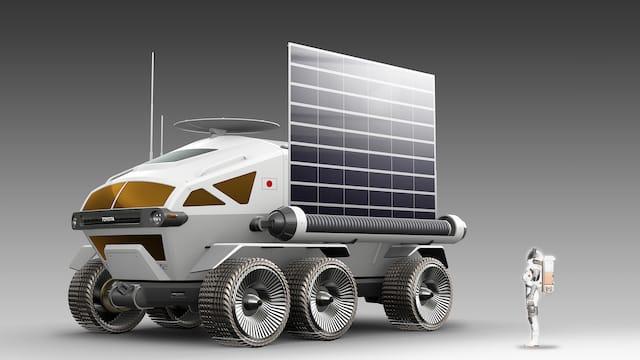
- Ikeda
-
Based on what we’ve talked about so far, do you think that the characteristics of hydrogen fuel cells are extremely well-suited for space?
- Terashi
-
I think so. I think that's why fuel cells have been used since long ago in the Apollo Program. I guess we can’t really know unless we ask Princess Kaguya. [Note: Princess Kaguya is a popular fairy tale figure who, according to legend, came to earth from the moon, but was fated to return there on the 15th day of the eighth month of the lunar calendar.] Is there really water on the moon? If there is, I guess it would probably be ice. If so, we can electrolyze it with solar power and split it into hydrogen and oxygen. That way, a hydrogen society could be created on the moon. When electricity is generated with solar power and stored in batteries, then, when fully charged, we can electrolyze the water with surplus electricity to form hydrogen and store the energy. I feel that the moon is better suited for a hydrogen society.
- Ikeda
-
So what you are saying is that at the beginning you would have to make an effort to bring both tanks of hydrogen and oxygen, but if you find water or ice, you can be self-sufficient on the moon, and it is very likely that you won’t need to bring the tanks. Is that right?
- Terashi
-
Yes, that would be ideal.
- Ikeda
-
Thinking along those lines, I really feel that fuel cells are the future. As another required performance, you mentioned autonomous driving earlier, and also there is the problem of temperature. As an overall assumption, could you tell us what is significantly different about using a car on the earth as opposed to the moon?
- Terashi
-
Since we have to think in terms of extremely high to low temperatures, the same heat characteristics as a car on earth would not apply. There are various technical matters we will need to consider regarding both cooling and warming.
Another thing is we are not familiar with what the road and ground are like there. It looks flat, but it may be very soft or hard. As long as we drive normally on earth, we never imagine a car rolling over, right? However, we don’t know what would happen on the moon, and who knows, there may need to be a mechanism for the car to right itself if it rolls over. Or there may, for example, need to be a mechanism that the riders can use to get it back up. - Ikeda
-
Sure, it would not be possible to get hold of the Japan Automobile Federation (JAF) [Note: Japanese equivalent of AAA in the US] anyway. (Laughs)
- Terashi
-
That’s right (Laughs). However, considering where the vehicle will be driving unmanned, there won’t be anything or anyone there that could lift and get the car back up, so I am thinking we will need a function so that it can right itself.
- Ikeda
-
No one has ever experienced the dynamics of a car at 1/6 gravity.
- Terashi
-
That’s right. Though it might be possible in a simulation. Since the vehicle is rather slow, I don't think we will require high speed handling.
- Ikeda
-
Since the weight is 1/6 gravity, even though the mass doesn’t change, the relationship between the roll center (vehicle tilt axis) and the height of the center of gravity may be different from what we usually imagine on Earth.
- Terashi
-
Right. When a car is running on a rough road, the lower the center of gravity the more stable it is, so we have to start thinking about the packages and where to put what. However, when considering packages, before making a final decision, you have to determine all the travel and environmental conditions that you mentioned. At first, for the time being, we need to make the most of our knowledge of the conditions of use on the moon.
- Ikeda
-
I see. If the challenges under the harsh conditions of the moon don’t lead to expanding the “electric power society” on the earth, then you cannot be said to be giving back to the people.
So how will Toyota's Lunar Challenge help the evolution of cars on earth? We look forward to continuing the story of exploring the future of electrification in our next installment.

